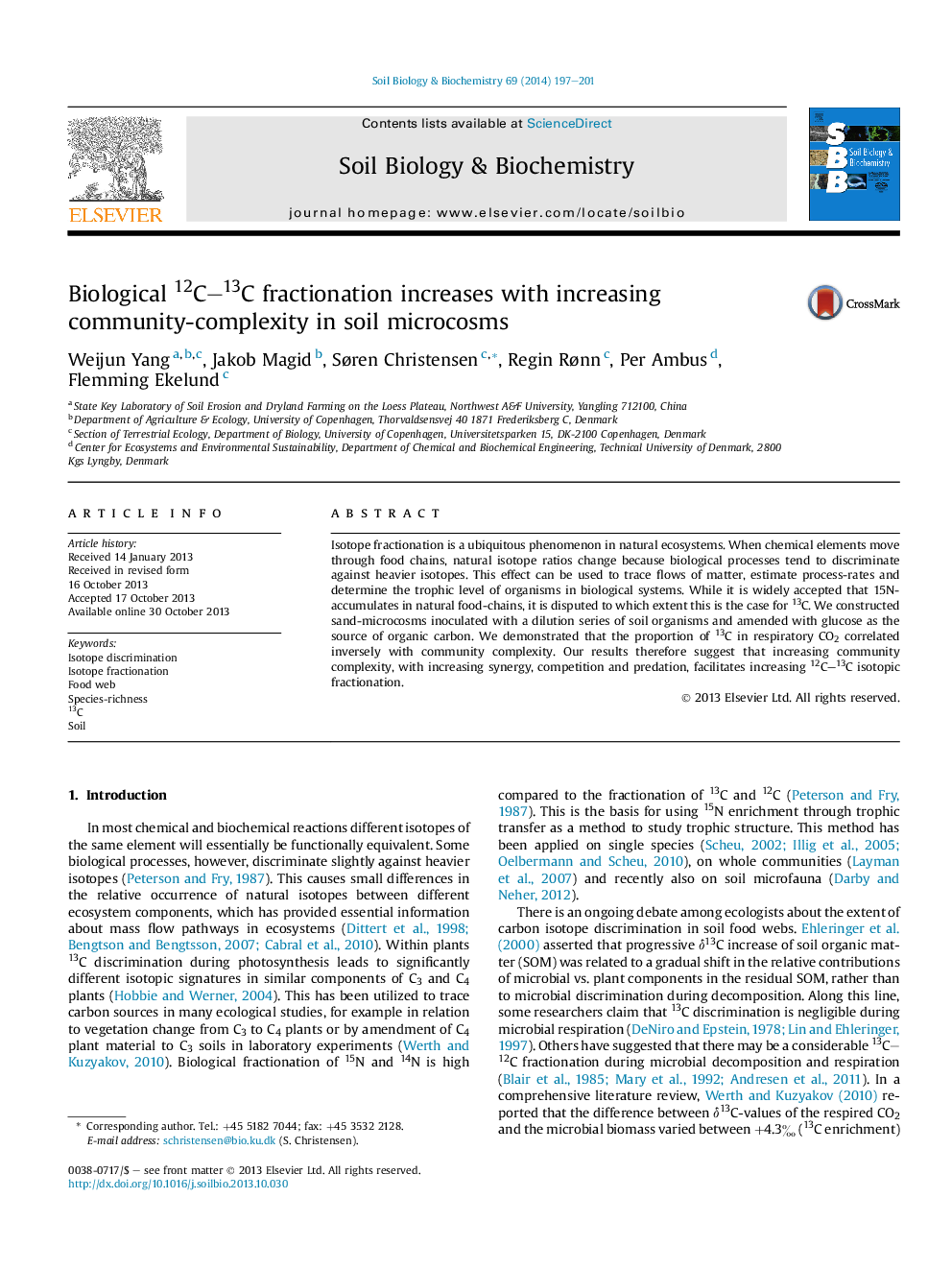| Article ID | Journal | Published Year | Pages | File Type |
|---|---|---|---|---|
| 2024729 | Soil Biology and Biochemistry | 2014 | 5 Pages |
•We made microcosms with an array of species richness using serial soil dilutions.•Biological C12–C13-fractionation increased with species richness.•Biological C12–C13-fractionation increased with time.
Isotope fractionation is a ubiquitous phenomenon in natural ecosystems. When chemical elements move through food chains, natural isotope ratios change because biological processes tend to discriminate against heavier isotopes. This effect can be used to trace flows of matter, estimate process-rates and determine the trophic level of organisms in biological systems. While it is widely accepted that 15N-accumulates in natural food-chains, it is disputed to which extent this is the case for 13C. We constructed sand-microcosms inoculated with a dilution series of soil organisms and amended with glucose as the source of organic carbon. We demonstrated that the proportion of 13C in respiratory CO2 correlated inversely with community complexity. Our results therefore suggest that increasing community complexity, with increasing synergy, competition and predation, facilitates increasing 12C–13C isotopic fractionation.
